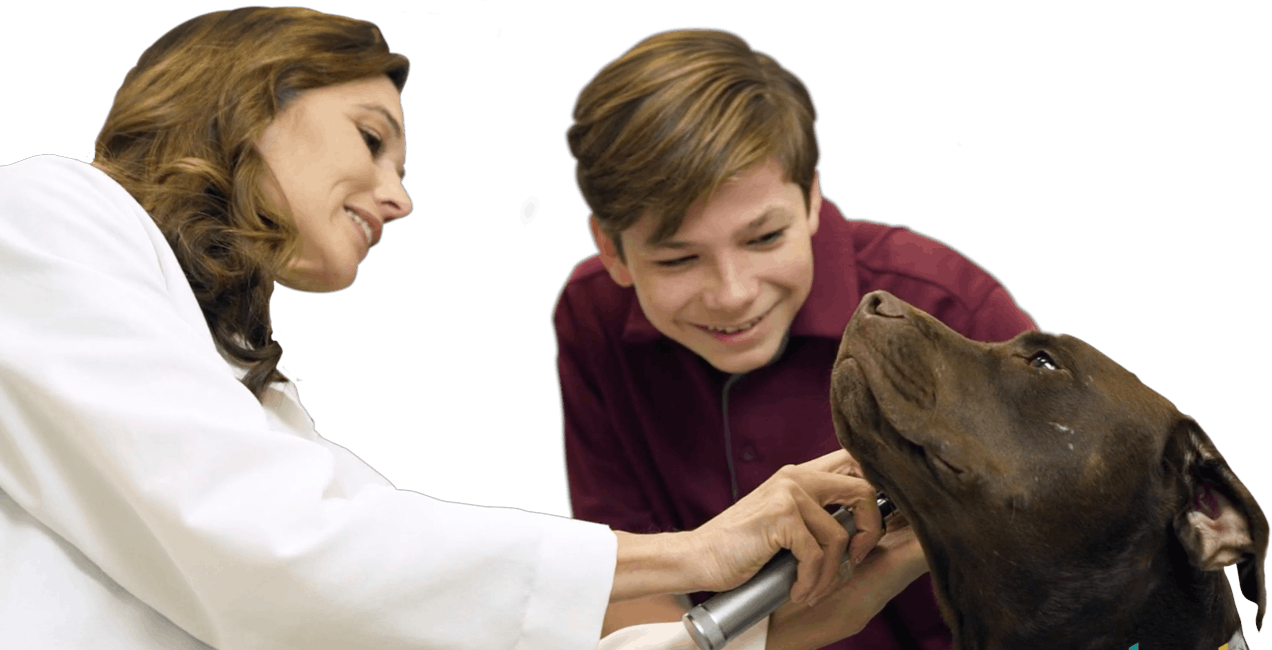Vet Set Go! Hardcover Book

Learn Online At Vet Set Go Academy

Today, there are more than 105,000 veterinarians in the United States.1 That might seem like a lot, but it’s less than half of the people who attended a recent Taylor Swift concert in Chicago. Or about the same as the population of Boulder, Colorado. By comparison, there are more than 850,000 human physicians, 2.8 million registered nurses and 1.3 million licensed lawyers in the U.S. 3,4,5
Click on your state in the map below to see how many veterinarians there are:
In a profession that was once dominated by men, it appears the seesaw is tipping the other way: Currently, 58% of veterinarians are female, while 42% are male. Are there more men or women vets in your state? Click on the interactive map above to find out.
Most veterinarians work in private practice with 65.7% in clinics devoted exclusively to companion animals such as dogs, cats, pet birds and exotic animals. Of those that work in public and corporate positions, 41.6% are employed by colleges or universities, 21% work in industry (such as at animal health companies that make veterinary vaccines, medications or pet foods) and 11.5% work for the federal government.1
The number of veterinarians is expected to continue to grow for several reasons. More and more American households have pets, and pets are now more likely to be considered members of the family. As a result, people expect their pets to have access to the same kind of sophisticated medical care that humans do, such as medical specialists in orthopedics, cancer, nutrition, dermatology and other fields.
Pets are also living longer, so they need more medical care as they develop chronic diseases common in older pets. Will you be one of the veterinarians to help them in the future?
1 American Veterinary Medical Association. Market Research Statistics: U.S. Veterinarians 2015. Available at: https://www.avma.org/KB/Resources/Statistics/Pages/Market-research-statistics-US-veterinarians.aspx. Accessed August 27, 2016.
2 Shepherd, AJ. Distribution of actively employed US veterinarians by state and gender, 2003-2008. J Am Vet Med Assoc. 2010; 236(4): 420-422.
3 Young A, Chaudhry HJ, Pei X, et al. A census of actively licensed physicians in the United States, 2014. J Med Reg. 2015; 101(2): 8-23.
4 Department of Health and Human Services. The U.S. Nursing Workforce: Trends in Supply and Education, 2013. Available at: http://bhpr.hrsa.gov/healthworkforce/reports/nursingworkforce/nursingworkforcefullreport.pdf. Accessed August 28,2016.
5 American Bar Association. Lawyer Demographics Year 2015. Available at: http://www.americanbar.org/content/dam/aba/administrative/market_research/lawyer-demographics-tables-2015.authcheckdam.pdf. Accessed August 28, 2016.

Sign up to comment and share stories with future veterinarians just like you!
Comments Add Comment
BellaGonzalez
I will be one of the veterinarians to help pets in the future.
Dr. Chris Carpenter
I hope you are!
animallover1300
Wow! I had no idea there were so few vets! I want to be number 105,001!
LexiLovesLois345
I had no idea there were so many female veterinarians. I want to be one of them!
Animallover18
Yeah me too I want to be a veterinarian as well I love animals and I have been seeing the videos here on the website and want to learn more😁
unicorncaroline
I really want to be a vet and volunteer but I'm 10 so I will do a much as I can to help till I can BECOME A VET!😀😉😊💗🐶🐈😸
Dr. Chris Carpenter
You can still find opportunities to get animal experience even when you are 10 years old. Don't give up. Keep looking.
unicorncaroline
minsoda has 50 female vets and 50 male vets! cool
RubyRooster
Wow the most vets live in California, but the least are in Washington D.C.!!
Want to add a comment?
In order to comment you need to login or join Vet Set Go